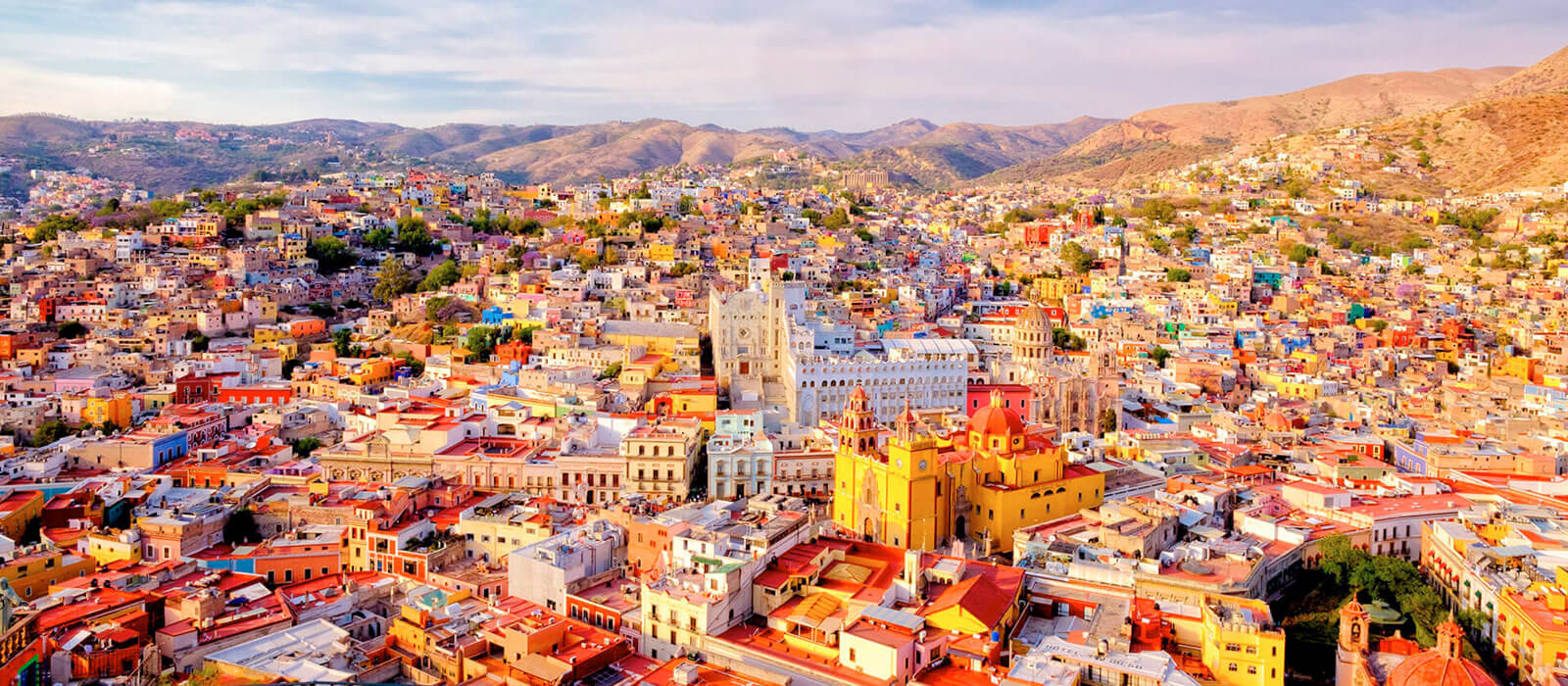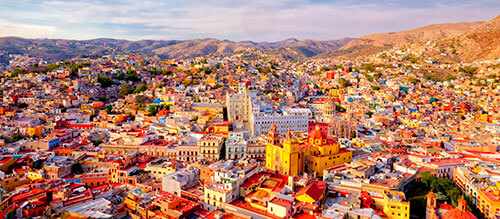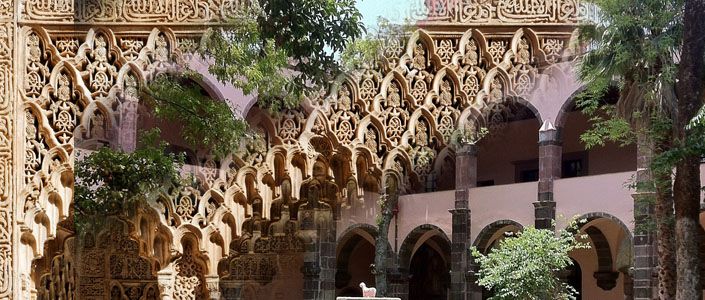Language trip to Mexico | Language exchange Mexico
Language study abroad in Mexico. Discover the country and everything it has to offer during your language study abroad program in Mexico.

Why not take a language trip to Mexico to improve your Spanish? This Spanish-speaking country is steeped in history, culture, and warmth. A language trip to Mexico is much more than a tourist destination; it is a transformative experience. Every conversation, every meal, and every walk are an opportunity to improve your Spanish while immersing yourself in a fascinating environment.
A language trip to Mexico combines dynamic classes with cultural adventures, authentic encounters, and cuisine that will make you fall in love. From the Caribbean beaches to the mountains in the center, this country offers a wealth of experiences that make it the ideal place to live the language.
Why choose a language trip to Mexico?
Here are some advantages of choosing a language trip to Mexico to completely master your Spanish:
- Clear Spanish and a musical accent. The Spanish spoken in Mexico is one of the most widely spoken in the world, and its accent is clear and easy for foreign students to understand. It is ideal for those just starting out in the language.
- Quality education. Don Quijote's Spanish school in Mexico has experienced teachers and methods adapted to all levels. We offer programs that are tailored to your needs and will help you see progress in no time. In addition, we also offer accommodation and activities to complement your classes, all designed to further enhance your immersion.
- Cultural proximity and hospitality. Mexicans are known for their warmth and friendliness. As a foreign student, you will be welcomed and have many opportunities to practice the language in everyday situations.
- Affordable cost of living. Compared to other Spanish-speaking countries, Mexico offers excellent value for money. Accommodation, transportation, food, and activities are much more affordable than in Europe.
- Cultural and natural diversity. Mexico is huge and varied: beaches, deserts, mountains, jungles, colonial cities, and magical towns. Each region has its own identity, allowing you to experience the language in multiple contexts.
What to see during your language trip to Mexico
Mexico is a vast country in which to learn the language, with many places and cities to visit, each offering a different learning experience. However, here are three of our favorite cities for a language trip in Mexico:
Playa del Carmen
Located on the Riviera Maya, learning Spanish in Playa del Carmen combines beautiful Caribbean beaches with a large international community. It is one of the most popular destinations for studying the language thanks to its relaxed atmosphere and excellent range of language schools.
What's more, you can study in the morning and enjoy the beach in the afternoon, go snorkeling, visit cenotes, or stroll along the famous Fifth Avenue, which is full of shops, cafes, and bars. Nearby are the Mayan ruins of Tulum, Cobá, and the impressive Chichén Itzá, ideal for a weekend getaway.
Furthermore, as it is a tourist city, many people are used to talking to foreigners, which will allow you to practice your Spanish without fear or pressure.
Oaxaca
The second city is Oaxaca, a paradise for culture lovers. This colonial city, a World Heritage Site, is full of colors, markets, folk art, and a vibrant cultural life. It is perfect for students looking for an authentic experience, far from the big tourist chains.
Life in Oaxaca is peaceful, ideal for concentrating on your studies, but also very rich. Here you can visit Zapotec ruins such as Monte Albán, artisan villages such as Teotitlán del Valle, and participate in cooking or alebrijes workshops.
People in Oaxaca speak slow, very understandable Spanish, and many still speak their indigenous languages, adding an extra cultural dimension to your language experience.
Guanajuato
Finally, Guanajuato is a hidden gem in the center of Mexico. Its winding alleys, underground tunnels, and colonial architecture create a fairytale setting. It is a university city, so the youthful and cultural atmosphere is very present.
Here you can attend cultural events, outdoor movies, concerts, festivals, and literary gatherings. Plus, the city is very walkable, which encourages constant contact with people and use of the language. Be sure to visit the surrounding area: San Miguel de Allende, just an hour away, is another charming city where you can practice your Spanish in an artistic and international environment.
Gastronomy during your language trip to Mexico
Learning Spanish in Mexico also means discovering one of the richest gastronomic heritages in the world. Declared Intangible Cultural Heritage by UNESCO, Mexican cuisine is as varied as it is delicious.
In Oaxaca, you can try the famous mole negro, tamales, tlayudas, and chapulines (fried grasshoppers). In Playa del Carmen, enjoy ceviche, fish tacos, and cochinita pibil, a dish typical of the southeast. In Guanajuato, savor enchiladas mineras, gorditas, and traditional sweets. Local markets are an excellent opportunity to practice the language during your language trip to Mexico.
Asking about ingredients, chatting with vendors, or taking a Mexican cooking class will allow you to enrich your vocabulary in a fun and practical way.
And of course, you can't leave Mexico without trying tacos at a street stand, accompanied by a refreshing agua fresca, horchata, or jarrito. Eating here is a cultural experience that is part of the learning process.
A language trip to Mexico is much more than studying grammar and vocabulary. It will allow you to open to the world, understand another way of life, and discover a country that blends indigenous past, colonial heritage, and modernity.
As a Spanish student, you will find Mexico to be a stimulating, welcoming environment full of possibilities. You will learn, gain independence, empathy, adaptability, and take home memories that will stay with you for a lifetime.









